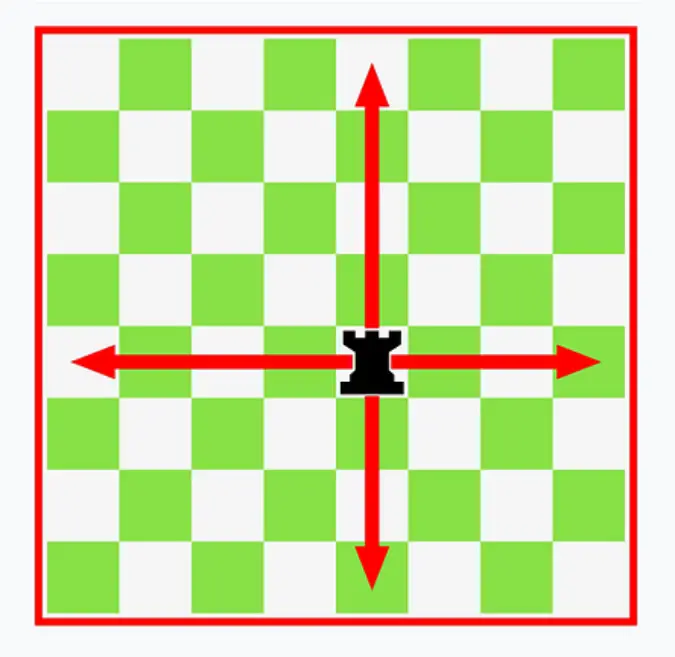The rooks are very effective chess pieces, second only to the queen in power. On a freshly set up chess board, each side starts with two rooks, one on each end of the player’s back row.
If you’re not sure what a rook can do, this FAQ should cover your question.
Can Rooks Move Backwards?
Yes. Rooks can go backwards. The rook can move forward, backward, left and right.
How Does a Rook Move?
The rooks move in a straight line—forward, backward and to the sides. They can only move in one direction per move. The rook can’t move diagonally. Here’s a visual of the rook’s movement:

How Many Squares Can a Rook Move?
The rook can move as many squares as are open in one direction, either vertically or horizontally. The most squares it can move in a turn is 7, going from one side of the board to the other.
Can a Rook Jump?
Usually, no. The rook’s normal movement is along open squares. If a friendly piece is in the way, the rook has to stop. If an enemy piece is in the way, the rook can stop by it or capture it.
There’s one exception—when castling the rook jumps over its own king. Castling can only be done once per game, if it’s done at all. To castle, all the squares between the king and rook must be empty. The king is moved 2 squares toward the rook, then the rook is placed on the other side of the king, essentially jumping it.
Can a Rook Capture a Queen, Rook, Bishop, Knight or Pawn?
Yes. A rook can capture all those pieces if they are in its path, but it can only make one capture per turn.
Can a Rook Take a King?
No. No piece can capture a king. The rook can place the enemy king in check or checkmate.
Can a Rook Become a Queen?
No. The rooks can’t turn into any other piece, including a queen.
Can a Rook Move Diagonally?
No. The rook never moves diagonally. It only moves along a row or a file—left or right, and up or down.
I hope this answered your question about whether rooks move backwards in chess.